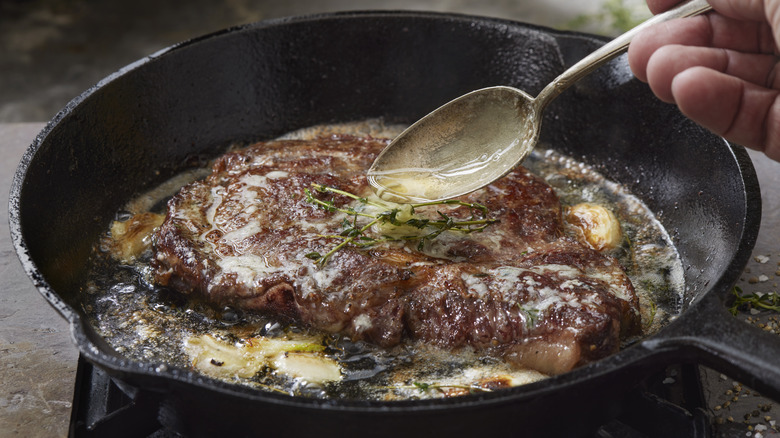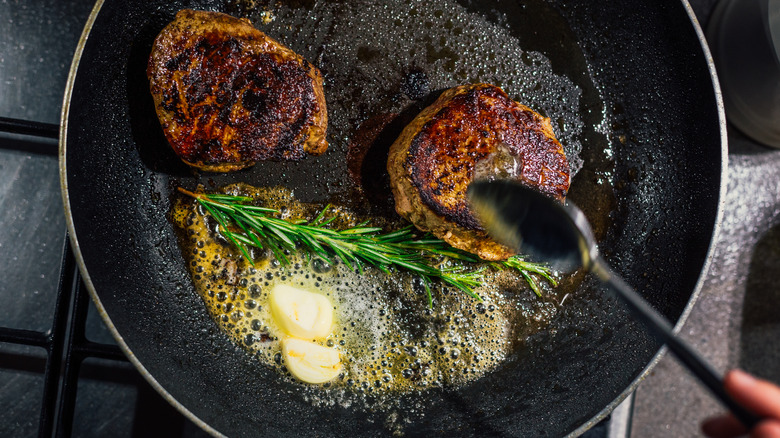Why You Should Avoid Using Salted Butter To Baste Your Steaks
When it comes to cooking, not all butter is created equal – especially in the basting arena. Basting adds moisture and flavor to the surface of cooked meats. To do it, use a spoon or basting brush to redistribute the flavorful pan drippings, which soak into the meat.
Constant high temperature (with lots of flipping) is crucial for successful butter-basting. The outside needs to be crisp and the insides need to be cooked all the way through. Salted butter burns faster, meaning you have less time to work with it in the pan. For a controlled, unhurried baste, unsalted butter's lower smoke point makes it the right tool for the job. Plus, for pan-searing and butter-basting steaks, it's customary to hit the raw steaks with a generous layer of salt around the exterior for the perfect sear. If you throw salted butter on top of that, it can be easy to overdo it and ruin the flavor of the dish.
Unsalted butter's neutral, creamy taste also means it won't interfere with your steak's meaty profile. You can have more control over the saltiness level by using unsalted butter and manually adding a pinch of salt afterward. For the pre-cook rub, the golden ratio is 1 teaspoon of kosher salt per pound of steak.
Salted butter burns faster, and butter-basting is all about balance and working quickly
To create an aromatic, rich flavor with butter-basting, sear your steak, then add the unsalted butter to the skillet, tilting the pan so that the melted butter is pooled to one side. Then, repeatedly spoon or brush the butter liquid over the steak until most of it is absorbed into the meat and any remaining drippings in the pan have browned. The key is to add the butter to the pan just a few minutes before your steak has finished cooking. It'll soak into and coat the meat without having a chance to burn and turn bitter. 20 to 30 degrees from your ideal doneness temperature is the sweet spot for adding the butter (125 degrees Fahrenheit for rare, 135 for medium rare, 145 for medium, and 150 or above for well-done steak).
For optimal butter basting, use a well-marbled steak roughly 1 ½ inches thick. This thickness will facilitate greater differentiation between the crispy, buttery outside and the tender inside of the steak. Ribeye (Delmonico), strip, tenderloin (filet mignon), and T-bone (porterhouse) are the best cuts for basting. Butter-basting can even help thick steak cook more quickly, as the hot liquid fat soaks into the meat, cooking the cut from the top and the bottom at the same time. Alternatively, you could also baste your steak in browned butter to impart toasty, nutty flavor.

